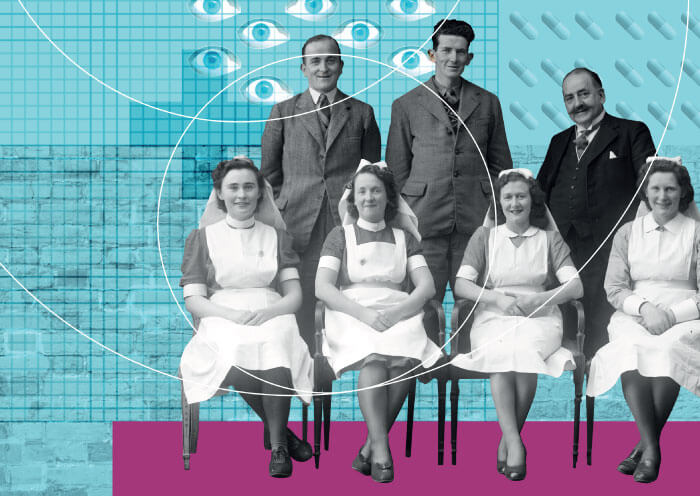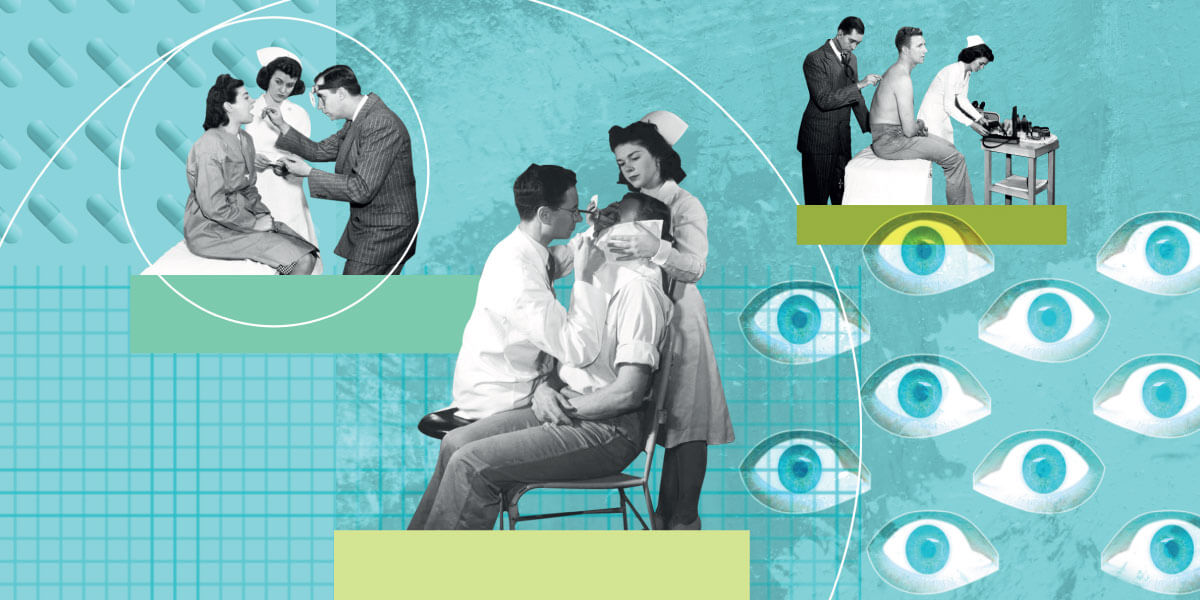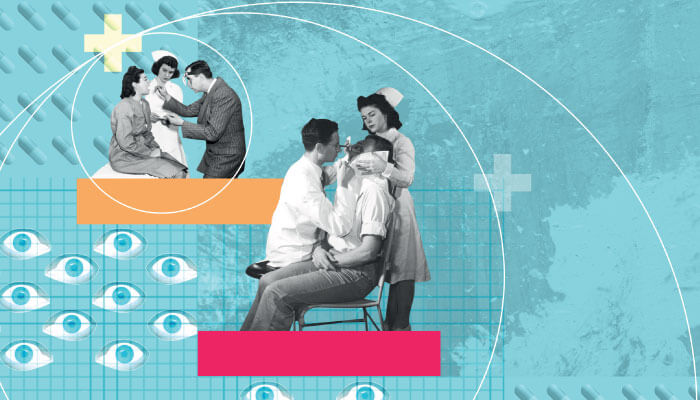
Like most stories of invention, ours is one of persistence. It started when we were working together at the CHI de Créteil Eye Clinic in France. The clinic had been in possession of a Navilas laser since 2016, and we were lucky enough to get the chance to use it. It had real benefits over conventional lasers, such as the precisely pre-planned laser positioning and faster PRP sessions (using a contact lens). A non-contact treatment option was provided for the focal laser delivery. Still, such a solution was not available when it comes to the periphery – something that would really improve patient comfort.
As ophthalmologists, we want to see as much of the retina as possible – and that includes the periphery. So why wasn’t non-contact PRP an option on the Navilas? We decided to go to the source – OD-OS, the creators of Navilas – and ask them: “Why don’t you have a non-contact widefield objective?” They told us that it wasn’t possible, which we didn’t believe. We thought we knew better – and we resolved to create one without their assistance!
The major stumbling block? Neither of us had ever tried to build such a device before. Our only combined experience of inventing something was a computer program developed by Alexandre in the early days of OCT-angiography. Back then, the focus was on qualitative data, but Alexandre was more interested in quantifying vascular density. Alexandre decided then that instead of trying to adjust someone else’s software, he would just invent his own. And that’s what we tried to do with the PRP solution – think outside the box to make something new.
We came up with a design and visited a plumbing store (!) to find a pipe with the right dimensions. We took a lens usually used for fundus exams and fixed the two together to create a rudimentary non-contact device. We couldn’t wait to try it out. Would it work at all? Thankfully, it did; we had found a way to see the periphery without touching the eye at all.
Excited, we took our device to OD-OS. The initial reaction was that this solution might not work out. Undeterred, we asked again. And for a second (and possibly third) time, they said it wasn’t possible. It took us some time to convince the company but finally they liked what we had done and asked to incorporate it into a commercial design. Of course, we said yes.
Together, we came up with what would later become the non-contact widefield objective – a navigated non-contact PRP solution, with flexible, pre-planned spot positioning. It works the same as the Navilas contact PRP solution for Navilas, but with one added benefit: comfort. For the patient, it means no longer having to keep a lens on your eye. For the clinician, it requires you to simply sit behind the device and simply press the pedal with your foot.

Of course, there is always room for improvement. The current solution is a fraction slower than a conventional contact lens, as the precision eye tracking Navilas software sometimes pauses to find the correct registration and spot positioning. Still, I am confident we could make it as fast, if not faster, with a few slight modifications.
We are currently running a study to measure the reliability, comfort, and safety of non-contact PRP compared with conventional contact lenses. We chose these three treatments parameters because they are the most important for patients and clinicians. Seven people are taking part in the study, although 20 have been treated using the non-contact PRP without any problems, and we hope to publish the final results later this year.
If our story tells you anything, let it be this: as physicians, we should stop taking “no” for an answer. Navilas had tried to make a non-contact PRP solution before – but didn’t succeed because they didn’t have the focus as we have as clinicians. Working with patients gives us an understanding that companies just don’t have – it’s our job to share that insight. If you see something that could be improved, improve it – don’t let “no” stand in your way. We should all be striving to make ophthalmology better. Remember, you don’t have to be an inventor to create something worthwhile; sometimes all it takes is a clinician who thinks outside the box, and a partner who is willing to listen.

What stopped you from creating a non-contact PRP solution?
We actually had a non-contact PRP objective similar to our current focal non-contact objective in our very early product versions. Though it was good in a certain number of requirements (such as distance to the eye), it was not truly successful, as it made it too difficult to treat the far periphery. We only found our first widely used product for peripheral applications when we turned back to a contact lens solution. The doctors were perfectly trained to use these lenses, and to manipulate the lenses in a way to get out far enough. With that success, we dropped any idea around a non-contact peripheral treatment.
What did you think when you were approached by Pedinielli and Amoroso?
Not possible! That was the very first (and second?!) thought. But Dr Pedinielli and Dr Amoroso kept insisting that this idea would work and be a really great addition to the laser. We decided to take a look at the imaging and simulations taken with their “hand-made” objective. We started to ask them about critical aspects, such as field of view. Question by question, they convinced us.
Did it take long to turn their idea into a reality?
Yes and no. It took a while to get everyone at the company convinced that it could work – and to find the right team to make it happen. Once this was done, it was relatively fast.
Would you consider working with the doctors again?
Definitely! It is always a pleasure to work with enthusiastic and clever people. It was amazing how patiently they answered all our questions again and again. I am looking forward to a continued cooperation with them in the future.
How can clinicians offer new perspectives to companies?
Clinicians usually know better than companies what they need. In other words, they can more easily detect where an improvement can be made, either to usability or to the treatment itself. Although usability issues can be noticed by employees, doctors might be able to propose a solution – “it would be nice if…” – something that is impossible to know from observation alone. Therefore, all medical device companies are in need of ongoing user feedback – positive as well as negative – to make products even better. Clinicians usually have a much more objective opinion of how good a solutions really is!
Why did you decide to develop a non-contact PRP device?
To try to go beyond the limits of contact lens laser technique and create something new to improve the comfort of patients during treatment.
What is the key benefit of a non-contact solution?
The treatment is more comfortable for the patient – and for the doctor, too.
Why an ultrawide-field lens?
It allows us to see all the way into the far periphery of the eye. I know that because I tested it on myself during the creation process – in training mode, of course!
Would you call yourself an inventor?
Dr Pedinielli and I tried to find something new to ameliorate the conventional laser technique, so… I guess we are!
Do you plan to create anything else in the future?
We will focus on this project for the moment, but maybe in the future… Why not?!
